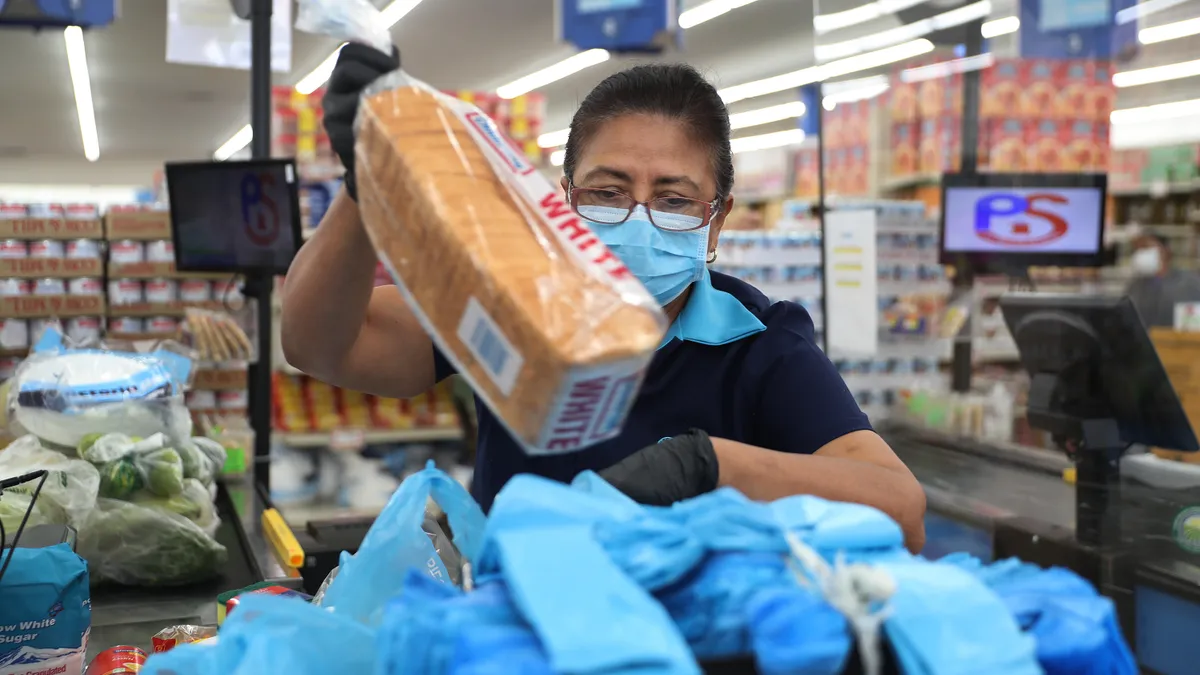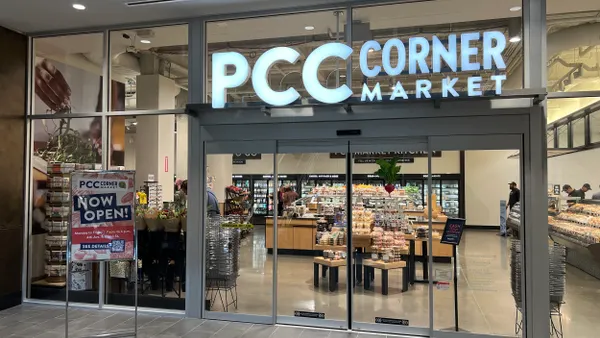Dive Brief:
- Food-at-home prices increased 11.9% over the past year — the largest 12-month increase since the period ending April 1979 — according to Consumer Price Index (CPI) data for May released by the U.S. Bureau of Labor Statistics (BLS) on Friday.
- The monthly food-at-home index rose 1.4% in May, up from the 1% increase recorded in April.
- Shelter, gas and food price increases were the main factors behind the annual CPI increase for all items of 8.6% in May — the largest 12-month increase since the period ending December 1981.
Dive Insight:
May marked the fifth consecutive monthly increase of at least 1% for the food-at-home index.
Grocery prices increased for all six of the major food categories during the month. Dairy and related products rose 2.9%, marking its largest monthly spike since July 2007. Nonalcoholic beverages increased 1.7%, and cereals and bakery products rose 1.5%. The index for meats, poultry, fish, and eggs rose 1.1%, with eggs increasing 5%.
The index for fruits and vegetables, which was the only one to decline in April, shot up again for a 0.6% increase in May.
On a year-over-year basis, all six food-at-home categories increased, with five jumping by more than 10%. At 14.2%, meats, poultry, fish and eggs saw the biggest spike, driven by eggs increasing 32.2%. Fruits and vegetables saw the smallest hike, at 8.2%.
Food-away-from home sales, by comparison, rose 7.4% over the past 12 months and 0.7% over April, according to the latest BLS figures.
The overall inflation rate for May climbed higher than the levels recorded in April (8.3%) and March (8.5%).
Many retailers have been feeling squeezed by the high inflation of recent months as consumers tighten their wallets for discretionary spending and grapple with higher energy and fuel costs. The index for energy rose 3.9% in May after declining the prior month, and the gasoline index increased 4.1%.
Walmart CEO Doug McMillon told investors on the company’s earnings call earlier this month that inflation has hurt the company’s top and bottom line due to high fuel, container, storage and other costs, while shoppers stay away from high-margin general merchandise to make up for higher food prices.
At an event earlier this week, McMillon said the retailer is closely watching its most value-conscious shoppers and how they are impacted by high food costs for staple grocery items such as rice, beans, pasta, tuna and milk.
“I am concerned about the inflation rate, and should it stay at this level or go up and be there for a sustained period of time — I think that has a negative impact on too many families,” McMillon said at the event.
Some retailers, particularly clubs and discounters, have benefited from shoppers seeking reprieve from costly grocery bills.
In its latest earnings report in May, Costco saw increases of more than 10% in both same-store sales and profitability, and Senior Vice President of Finance and Investor Relations Bob Nelson said the club generated 9.2% more income from membership fees in its quarter than a year ago.












